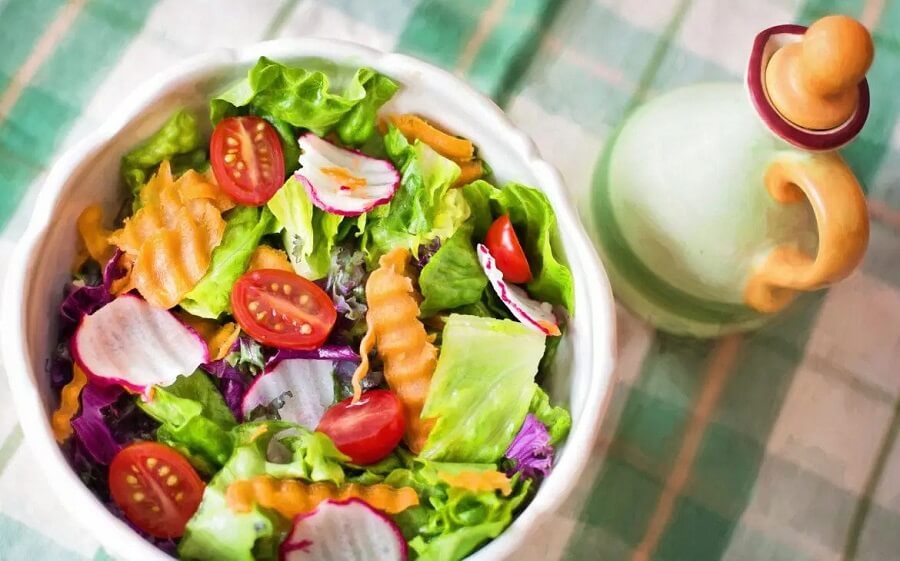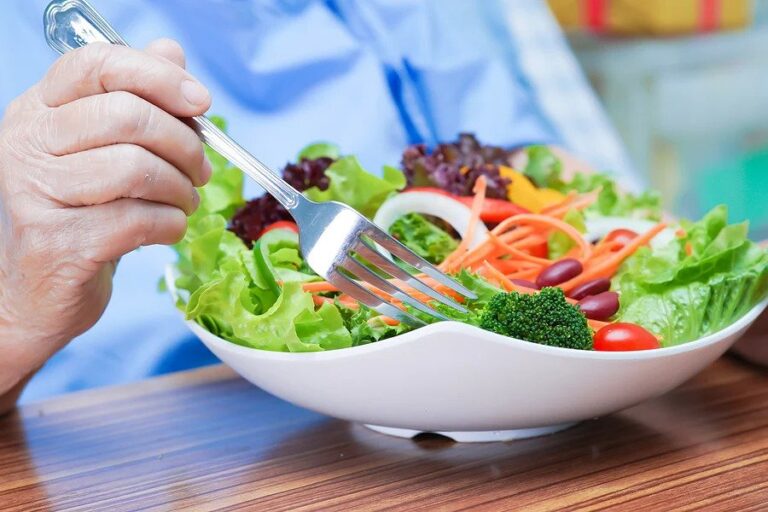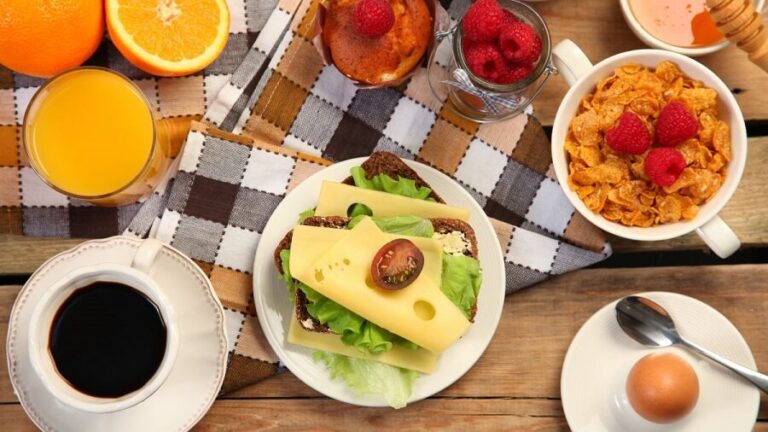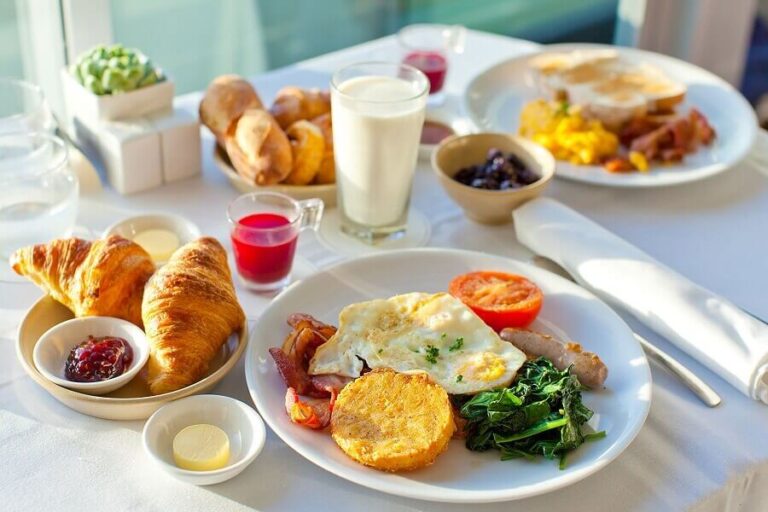An excess in calorie intake of only 200-300 kcal per day, can lead to a weight gain of 1 kg each month, this is up to 12 kg per year.
Being overweight is associated with an increased risk of several chronic diseases: diabetes, hypertension and obesity are some of them. That is why it is so important to learn to control the calories and portions that you eat during all your meals.
Read on to find out what the calorie content of breakfast, lunch, and dinner should be on a proper diet. Should breakfast have more calories than other meals?
Calories in a healthy diet
Calories are units of measurement of the energy contained in food. In a healthy diet the calories should not be neither more nor less than what your body needs.
On average, the recommended caloric intake for women is 2000 kcal per day, for men – 2500 kcal. The exact number depends on your height, weight, and level of daily physical activity. This is known as the metabolic rate .
To maintain a stable and healthy weight, nutritionists recommend adhering to the 400/600/600 rule: the calorie content for breakfast should be 400 kcal, lunch and dinner – 600 kcal each. Two snacks (lunch and afternoon tea) of 200 kcal each are also allowed.
RELATED:
Breakfast – 400 Kcal
Studies show that a full breakfast is important for energy throughout the day. This helps not only to control the appetite, but also to improve the functioning of all the body’s systems. (2)
In fact, people who consume enough calories for breakfast are less likely to overeat at lunch and dinner. However, it is not about overeating.
The recommended calories for breakfast are 400 kcal for women and 600 kcal for men. In addition, a nutritious breakfast involves the use of fruits, oatmeal, eggs, and plain yogurt, while sweet baked goods, white bread, and breakfast cereals are not the healthiest options.
RELATED:
- Ideal Breakfast – Muesli or Oatmeal?
- Fast or breakfast – which is better?
- Breakfast Cereals – Are They Healthy?
Snacks between meals – 200 Kcal
If you eat breakfast early enough, it’s okay to have a healthy snack closer to noon; This will help control the calories at lunch.
The best snack options are sources of protein, fiber, and healthy fats of about 150 to 200 calories, such as whole fruits, low-fat, sugar-free yogurt, or a handful of nuts.
Goji berries, half a banana, chia seeds, or flax seeds can also be relatively low-calorie and nutrient-packed options. They give a feeling of fullness and are excellent for reducing appetite . They can be taken natural (a tablespoon is enough) or in the form of a shake.
RELATED:
- High calorie diet – What is it and how is it done?
- Banana – calories, carbohydrates and nutrients
- Eggs – Proteins, calories and nutrients
Calories for lunch and dinner – 600 kcal
For most people, the calorie content of lunch and dinner should be around 500 to 700 kcal. The main reason why this figure is exceeded is free access to food (for example, a buffet), or not measuring portions (snacking, snacks).
So a simple way to control your calories at lunch and dinner is to serve the portion sizes you are going to eat, and not refill your plate over and over again.
When it comes to dietary recommendations, the best option for lunch is a combination of protein sources (meat, chicken, fish, plant protein) with whole grains and vegetables.
At dinner it is recommended to eat more vegetables and avoid red meat, since these take longer to digest than other foods and can cause stomach changes.
Consuming too much refined carbohydrates at dinner can be a problem. Its consumption is closely associated with changes in insulin, which can lead to the development of diabetes. Also, it tends to make a person feel hungrier and want to consume more calories for breakfast.
RELATED:
Macros vs calories
Despite the importance of maintaining adequate calories. Regulating the proportions of proteins, fats and carbohydrates plays an equally important role in nutrition.
An excess of calories will quickly lead to weight gain, but a lack of essential nutrients or macros is associated with metabolic disorders.
For example, a lack of protein can lead to a loss of muscle mass. Consuming too much saturated or trans fat is associated with high blood cholesterol levels.
By balancing both calories and macros, you increase your chances of achieving a healthy, ideal weight .
RELATED:
- Carbohydrates, proteins and fats the ideal percentage
- Nutrition to lose weight
- Nutrients – function and importance
ABSTRACT
Nutritionists recommend adhering to the 400/600/600 calorie rule. That is, eat 400 kcal for breakfast, 600 kcal for lunch and 600 kcal for dinner.
In addition, adequate nutrition allows two snacks of 200 kcal each. Following these guidelines in conjunction with the macro ratio is the most important thing to achieve a healthy and ideal weight.







